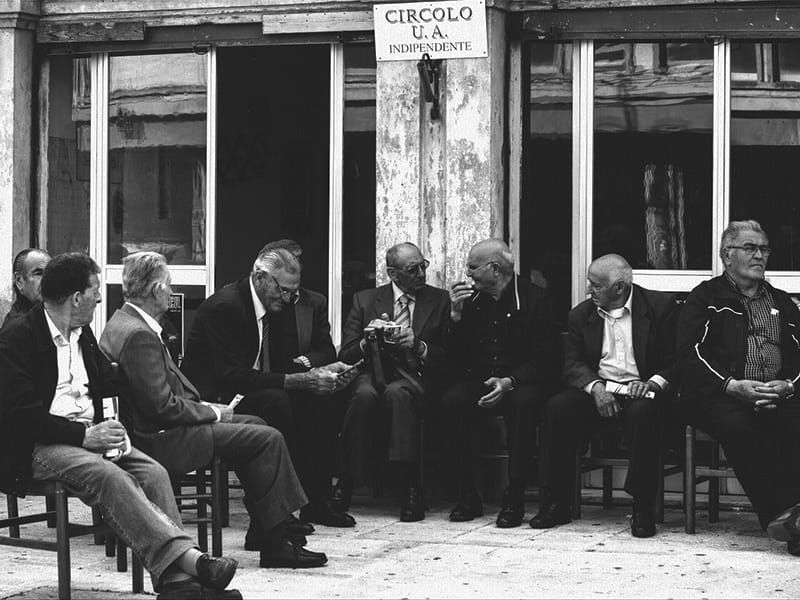
Forget raffia covered chianti, Italian wines are going native with stunning results.
The world famous Gambero Rosso Roadshow came to Elizabeth Street in the Sydney CBD on Monday 13 March. Australia was their last stop on their Asian Roadshow, which celebrated its 10th anniversary this year.
Gambero Rosso has been around for 30 years, promoting Italian wines to the world, originally in the northern hemisphere and more recently right across the world. Since 1987, they have been publishing the Vini d’Italia wine guide, which covers more than 2300 wineries and reviews their wines, assigning Tre Bicchieri (three glasses) to those wines that are rated at over 90 points.
For six hours that afternoon, the trade and media had unfettered access to the wares of 65 Italian wineries offering more than 200 wines for tasting. Some of the leading and well known wineries present included Gaja, Masi, Frescobaldi and Fontanafredda. This sensational experience was followed by a three-hour session open to all wine lovers.
There was an amazing array of Italian wine on taste – too many to be able to taste them all while battling through the assembled multitude, so I concentrated on the rare, innovative or unusual varieties such as pecorino (yes, I know it is the cheese but as it is named after a town, there is a pecorino white wine as well), which is really scrumptious. The two I tasted, both imported by Arquila Wines (www.arquilla-wine.com), were the Velenosi 2015 Offida Pecorino and the Villa Medoro 2016 Pecorino. Both are excellent wines with pungent aromas, masses of beautiful flavours and they finished with just the right amount of acidity to enliven the palate.
“Italians are making lots of stunning wines that are really worth checking out, especially from their native varieties.”
My attention was then drawn to wines made on the slopes of Sicily’s 3300-metre-high volcano Mount Etna. Due to its volcanic soil, like that of Santorini in Greece, the wines produced in the area are quite different in character to those of the other areas where the vines grow in ‘normal’ soil.
As I am sitting here writing this, I just heard on SBS the news that Mount Etna has exploded into action, hurting 10 people including a couple of vulcanologists. Let us hope that it a localised eruption and does not threaten the vineyards of Cottanera, which are fairly high up the side of the mountain. All four of their wines on taste were fantastic:
Whites
Cottanera 2015 Barbazzale Bianco, a delicious food wine made from the unusual blend of viognier and the native catarratto bianco.
Cottanera 2014 Etna Bianco Contrada Calderara, which is 100 percent carricante – another native white, which was matured for 12 months in oak and has masses of gorgeous flavours and a lovely tight finish. This is a really classy superb white wine with plenty of character.
Reds
Cottanera 2015 Etna Rosso Contrada Diciassette Salme (that’s quite a mouthful to remember), which is 100 percent the native red narrello mascallese. This wine is rather different in that they leave it on skins for three months before putting it into big, old oak barrels to mature. It is gorgeous, with tonnes of delectable flavours and a nice tight finish that makes it a brilliant food wine.
Cottanera 2015 Barbazzale Rosso is a blend of narrello mascallese and narrello capuccio, this is a lighter style wine, bright and vibrant and ever so easy to drink. (By the way, they also make wines from ‘conventional’ varieties such as merlot.)
The other Etna winery present was Nicosia, whose wines were equally as intense and delicious. The wines they presented were:
Nicosia 2012 Etna Bianco Monte Gorna, a rich, smooth, mellow white with a classy mouthfeel that was a blend of 60 percent carricante and 40 percent catarratto.
Nicosia 2010 Nero d’Avola Sosta Tre Sant, which has a splash of shiraz in it – a very unusual blend. Being more mature than most of the other wines on offer, it was very smooth and elegant but still with that typical Italian tight tannic finish.
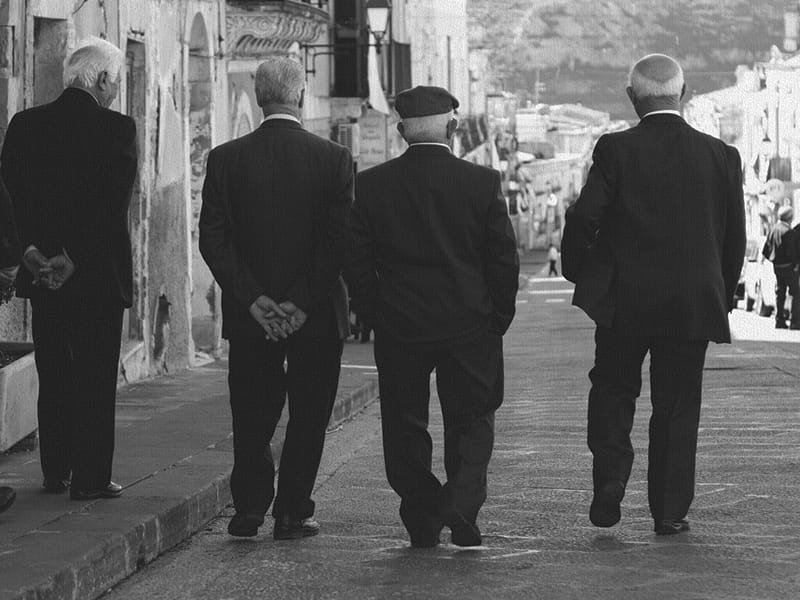
Nicosia 2011 Etna Rosso Monte Gorna Riserva made from 90 percent narrello mascallese and 10 percent narrello capuccio, which was an excellent dry red style wine.
Some of the other interesting wines – mainly innovative and rare varieties (how unusual for me, huh?) – that I tasted were:
Whites
Castello di Cigognola 2015 Bianca is a most unusual wine in that it is a white wine made from the red grape variety barbera. It is a sensational wine, with just a hint of yellow in the colour, soft gentle aromas and a wonderfully smooth, tasty, balanced palate.
Di Majo Norante2015 Rami Bianco is an interesting blend of 90 percent falanghina with 10 percent Greco, which produces a lovely wine with soft spicy aromas, a delightful mouthful of lively flavours and long lingering finish. Delicious.
Tenute Sella and Mosca 2015 Alghero Torbato Terre Bianche Cuvee 161 is made from the very rare torbato native white variety, this wine is light, bright yellow in colour, has a good crisp citrusy flavour and a refreshing crisp finish. A really great seafood wine.
Reds
Velenosi 2015 Lacrima di Morro d’Alba, made from the native lacrima di morro d’alba red variety that was almost extinct until a project, started in 1985, rescued it. Still very, very scarce. It has a slightly funky nose with hints of cigar-box aromas, a big tight deeply flavoured palate with a grippy finish that makes it a superb food wine. Outstanding.
Masciarelli 2014 Montepulciano d’Abruzzo Gianni Masciarelli is their reserve red wine. For a monte it has masses of colour, pungent aromas, oodles of smooth rich flavours and is very smooth.
Gaja 2011 Brunello di Motalcino-Pieve Santa Restituta While every wine from world renowned Gaja I have ever tasted has been excellent, what caught my attention with this 100 percent sangiovese wine was not only that it was bloody delicious but also that it is made in the cellars under the church it is named after. How cool is that? Talk about an underground wine! A food wine that needs some time.
Tenute Rubino 2015 Susumaniello Oltreme Susumaniello is a very rare variety native to Puglia, there are around 80 hectares of it in the world, of which Tenute Rubino own 21 hectares. This is one of only three to four straight varietal wines made. It has interesting deep herbal aromas, with a big rich mouthful of smooth flavour with a hint of pepper. It is a sensational wine.
Tenute Rubino 2014 Punta Aquila is a single vineyard wine that is 100 percent primitivo (zinfandel), which has a smokey aroma and a rich big flavoured palate with hints of spices and chocolate. Bloody gorgeous.
Torrevento 2014 Nero di Troia Torre del Falco Nero di Troia is a very high-quality red variety native to the Puglia region of eastern Italy. This wine has a slightly dusty earthy nose, and masses of elegant svelte flavours. It is ritzy and delightful.
I also tasted some great wines made from the more ‘mainstream’ Italian varieties and from the ‘classical’ European varieties, but it would take almost a magazine to be able to mention them all.
The point is that, contrary to the average Aussie wine drinker’s perception that Italian wine is cheap chianti in raffia-covered bottles, Italians are making lots of stunning wines that are really worth checking out, especially from their native varieties. The ones I have mentioned above don’t even start to scratch the surface of the estimated 100,000 winemakers in Italy – all this in an area the size of Victoria and Tasmania put together (or a third the size of South Australia).
So I suggest that you take a trip to your local bottlo and pick up a (not too cheap) bottle of Italian wine and check it out. Salute!





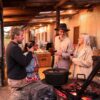
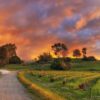
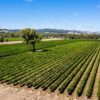





Okay, Pecorino isn’t named after a town. And Montepulciano is actually a highly pigmented variety, ie. really stable anthocyanins, so to suggest that “for a monte” it has good colour, is interesting. If you said the same about a Sangiovese, or a Vino Nobile di Montepulciano (this latter still a Sangio’ based wine and nothing to do with the variety called Montepulciano, which is the main ingredient in the DOC Montepulciano d’Abruzzo, and the main backbone of many Adriatic and central Italian reds) then I’d agree. Sangiovese doesn’t make deeply coloured wines. But Monte’ has it in spades.